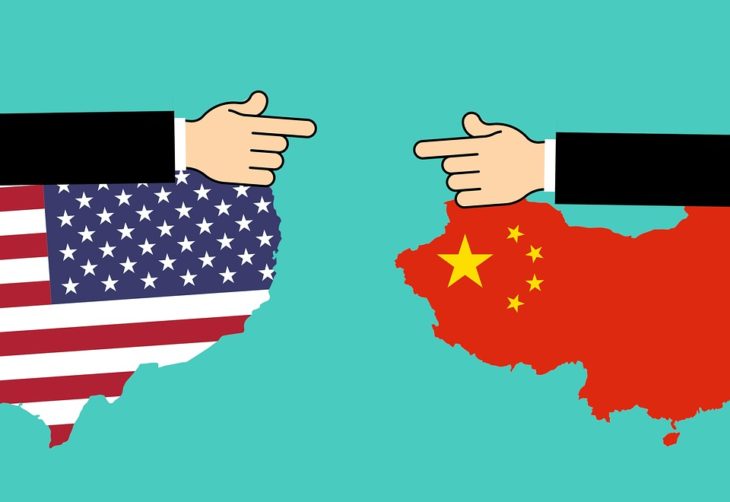
Why China’s Economy May Never Surpass the United States
In the late 1990s, economists at the International Monetary Fund made a bold prediction: China’s rapid economic growth could potentially outpace that of the United States by 2017.
However, that forecast did not materialize.
China’s economy, though impressively booming, was expected to leverage its colossal population of over 1 billion individuals, positioning itself as the future global powerhouse. As early as 2010, Goldman Sachs projected that China could surpass the United States as the world’s largest economy by 2030. The Economist went even further, foreseeing China’s ascendancy to the top spot by 2019. Such a transition would signify the rise of a new economic juggernaut ready to challenge U.S. influence across the globe.
Yet, the anticipated day of China’s supremacy remains elusive.
China’s economic growth has hit significant roadblocks, hinting that its remarkable 25-year stretch of rapid expansion might be tapering off prematurely, long before it achieves superpower status. Unlike the U.S. economy, which rebounded energetically after the COVID-19 pandemic, China’s recovery has been sluggish, with growth barely registering. Instead of applauding China’s economic miracle, experts now contemplate whether China’s woes could potentially trigger a domino effect impacting other parts of the worldwide economy.
Recent analyses suggest that China is unlikely to surpass the United States within the next two decades, as Desmond Lachman from the American Enterprise Institute conveyed to Reuters. Noted economist and New York Times columnist Paul Krugman likened China’s situation to Japan’s in the early 1990s when a rapid growth spurt came to a halt, dispelling concerns of imminent global dominance by an Asian nation.
Unlike Japan, which had already achieved affluence, China’s status remains less certain, and the prospect of it joining the ranks of advanced economies appears uncertain.
China is grappling with a slew of structural and cyclical issues, including a diminishing population that could soon cede the title of the world’s most populous country to India. China’s growth was heavily fueled by debt-driven real estate ventures, a strategy that has led to a real estate crisis akin to the “Lehman Brothers moment.”
In parallel, the unemployment rate among young adults in China, aged 16 to 24, has officially risen from 11% in 2018 to a troubling 21% at present. The actual youth unemployment rate could be even more alarming, reaching around 46%, according to the Eurasia Group.
China’s communist leadership has historically employed economic stimuli to navigate slowdowns, but recent efforts like interest rate cuts have not yielded desired results and have instead triggered stock market declines. The outlook suggests a potential long-term economic slowdown. Capital Economics advised in an August 21 report that investors should prepare for an extended period of China’s economic struggles.
The implications of China’s stagnation extend to global investors, U.S. policymakers, and even U.S. elections.
During his 2016 presidential campaign, Donald Trump expressed concerns over China’s impact on the U.S. economy and trade, imposing tariffs on Chinese exports in an effort to bolster domestic manufacturing. These efforts, however, often translated into higher costs for American consumers while failing to achieve their intended goals.
Interestingly, President Joe Biden maintained these tariffs upon taking office in 2021 and went a step further. Export controls were expanded to restrict the sale of certain U.S. technologies to China, curbing the production of advanced military equipment. Legislative measures aimed at promoting domestic semiconductor and green energy manufacturing have redirected investments away from China back to the United States. Additionally, a burgeoning alliance involving the U.S., Japan, and South Korea acts as an economic safeguard against China’s influence in Asia.
The trajectory of China’s economy carries profound implications beyond a mere economic showdown.
The course matters because under President Xi Jinping, China has exhibited increasingly assertive behavior toward neighboring nations, notably Taiwan, and positioned itself as a challenger to Western democracies. Initially, as China embarked on an export-driven boom after joining the World Trade Organization, analysts anticipated that capitalism would steer its communist government toward democracy and a more amicable stance. However, these predictions have not materialized.
President Xi regularly asserts intentions to “reunite” China with Taiwan through force if necessary. In parallel, China’s alignment with Russia has grown, with China becoming a crucial energy buyer and provider of goods that are challenging to procure due to sanctions.
Both U.S. political parties have adopted a more assertive stance toward China. President Biden, in the midst of his reelection campaign, has openly referred to Xi as a “dictator.” Trump, despite facing multiple legal charges, remains a frontrunner in the 2024 GOP race and has plans for further curbing trade with China. Florida Governor Ron DeSantis, trailing behind Trump, has also advocated for diminishing China’s economic influence.
China’s trajectory is far from a trivial competition of strength.
Its significance transcends mere economics as it evolves into a critical player on the global stage, impacting diplomatic and geopolitical dynamics. China’s status as a nuclear power and manufacturing titan persists, ensuring its capacity to disrupt if it chooses to do so.
Yet, China confronts its own internal challenges that might be as formidable as the external competition it faces. In contrast, the U.S. economy remains agile and resilient, preserving its standing on the international stage.
American dominance continues to prevail, for now.






